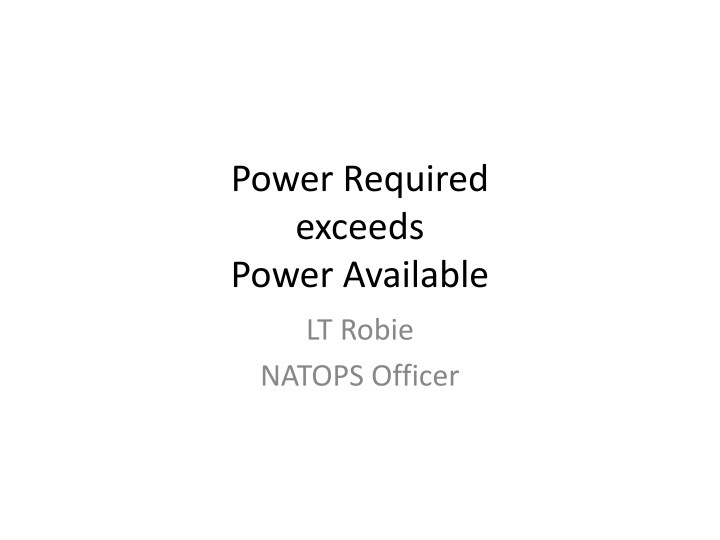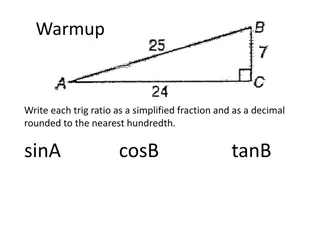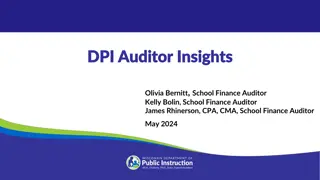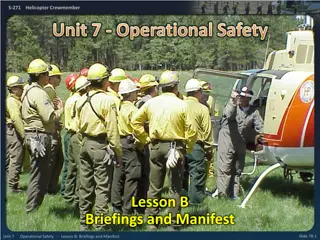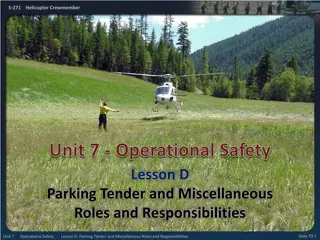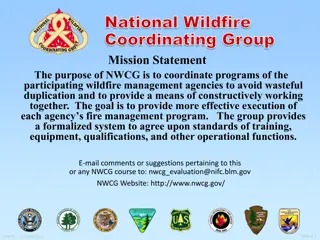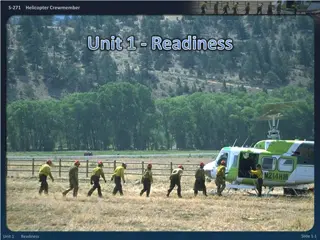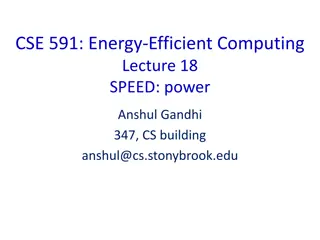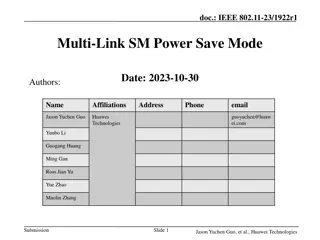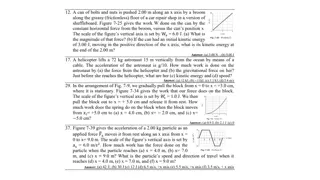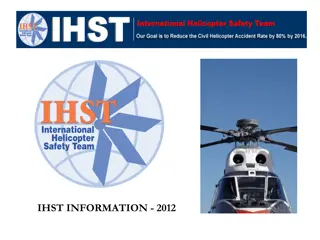Helicopter Power Management Guidelines
Understanding the factors that can lead to power required exceeding power available in a helicopter is crucial for safe operation. Indications such as uncommanded descent, rotor droop, loss of tail rotor authority, and right yaw signal potential issues to watch out for. Knowing when such occurrences may happen, such as engine malfunctions or exceeding torque limits, is vital for preparedness. High G-loading, rapid maneuvering, and other aggravating factors can exacerbate power management challenges. To avoid such situations, thorough preflight planning, careful load considerations, and mindful maneuvering practices are recommended. In case of power decreases, specific emergency procedures like adjusting collective, twist grip, and airspeed can help manage power effectively. Regular checks on power available are essential for assessing engine integrity and ensuring safe flight conditions.
Download Presentation

Please find below an Image/Link to download the presentation.
The content on the website is provided AS IS for your information and personal use only. It may not be sold, licensed, or shared on other websites without obtaining consent from the author.If you encounter any issues during the download, it is possible that the publisher has removed the file from their server.
You are allowed to download the files provided on this website for personal or commercial use, subject to the condition that they are used lawfully. All files are the property of their respective owners.
The content on the website is provided AS IS for your information and personal use only. It may not be sold, licensed, or shared on other websites without obtaining consent from the author.
E N D
Presentation Transcript
Power Required exceeds Power Available LT Robie NATOPS Officer
Indications Uncommanded descent with torque at maximum available Rotor droop Loss of tail rotor authority Right yaw
When Will it Occur? NOT under normal conditions for a TH-57 Hit torque limits first
When Will it Occur? Engine malfunction Engine Underspeed Compressor Stall FCU Failure (possible, but not always) Engine limited aircraft Hit Ng or TOT limits or Nr droop
Aggravating Factors High G loading High AOB level turns High GW High DA Rapid maneuvering Quick stop Spool up time from lower power to higher power settings Power off wave off Loss of wind effect Descending below a tree line Change of wind direction Loss of ground effect Transition to forward flight from a pinnacle
How to Avoid Pr > Pa Preflight planning to determine expected aircraft performance Plan for ALL phases of flight Heaviest load based on fuel for external load ops Avoid excessive maneuvering, particularly during high DA, hot temperatures, high GW, or marginal power situations Avoid high descent rates Requires large power inputs to arrest rate of descent Keep rotor head loaded Avoid downwind take offs/landings Maintain SA of wind speed/direction, especially during low altitude/low airspeed maneuvers
EP/Effect on Power Decreases Pr *1. Collective Lower as required to maintain a minimum of 90% Nr *2. Twist grip full open *3. Angle of bank level the wings *4. Airspeed adjust to 50 KIAS *5. Jettison as required If impact is imminent: *6. Level skids to conform to terrain *7. Cushion the landing Increase Pa Decrease Pr Decrease Pr Decrease Pr
Power Available Check Conducted when any question about engine integrity check power available with Nr in limits Is level flight possible? Raise the collective until the VSI is zero or Nr decays to 90% Adjust airspeed to minimum Pr (~50 kts) as required
Pa Not Sufficient VSI is below zero with Nr 90% and min Pr airspeed Need to autorotate May use what power is available to set up for auto DO NOT BRING TWIST GRIP TO IDLE
Pa Sufficient for Level Flight Able to continue flight Land as soon as possible Determine how much power is available Raise the collective until an operating limit is reached (Ng, TOT, Torque, or Nr < 90%) Allows you to figure out what kind of landing is possible and what is a suitable sight for landing If Pa is below HIGE torque, you will not be able to hover for a vertical landing Sliding landings require least amount of power
